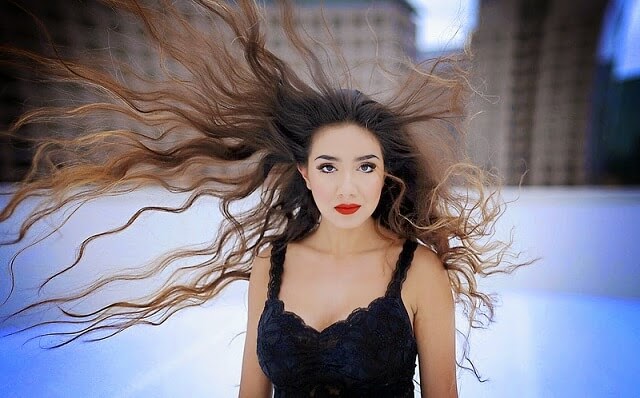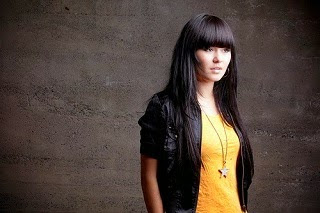
|
| [1] |
Differences between salon dye and box dye
There are a few major differences between professional dye and supermarket box dye. The first, and most obvious, is that salon dye is packaged as a single tube of dye. The product doesn't show pictures of models are examples of how it is intended to work.
This is a good thing because the pictures on box dyes are unrealistic and set many people up for unintended results. The color on the box isn't the color you end up with, because final color is a result of your current hair color plus the dye that is applied. If you dye your hair regularly, you can benefit from the mindset that dye adds color, rather than changes color. The pigment that is already in your hair will affect what you end up with after coloring.
Box dyes try to be a one size fits all product, but this isn't possible in hairdressing because everyone has different hair. If you want to get the right hair color every time you dye your hair, the first step is to understand that dye can't magically change the color of your hair. The dye you use needs to be adjusted to account for the tones in your hair that you want to emphasize, and that which you want to neutralize. The final colour after using a dye is a result of the dye color + your current hair color.

|
| [2] |
Developer volume
Another major difference between salon dye and box dye is the volume of developer present in the dye. When using professional hair color, developer is chosen in the volume that is necessary for the task at hand, and this gives you more control over the results and limits damage where possible.
This means that the lowest effective strength will be used for the result you want. Box dye not only doesn't tell you what strength of developer is present, but may not have the right concentration for the results you want, leading to mistakes or additional damage.
Other differences

|
| [3] |
Apart from these major differences, box dye also differs from salon dye in that it:
- Generally contains cheaper ingredients
- Doesn't last as long
- Often isn't true to level or tone
How to use professional hair color
Using professional hair color isn't dramatically different from using box dye. Unlike box dye however, the developer is not included and will need to be chosen and mixed into the dye. You should be using a tinting brush and bowl to apply this kind of color for the best results, but you can also use a shake bottle if your brush skills aren't so great or you simply prefer the bottle.
Preparing salon dye
After choosing a shade of salon dye, this is where using professional hair color starts to be different from a box dye. Unlike box dyes, where the dye is squeezed into pre-measured developer, salon dye is emptied into a tinting bowl.
At this point, you will need to select the appropriate developer for the results you want. The developer volumes and their specific roles include:
- 10 vol developer
This volume of developer has next to no lightening power. Use it for darkening or toning hair, but don't try to use it when you need to lighten your hair significantly as it won't work.
- 20 vol developer
This developer strength lightens your hair 1 - 2 levels. You should be using 20 vol in your dye when the shade you want is up to 2 shades lighter than your current color. You should also be using 20 vol on resistant hair that doesn't seem to hold color, as this will help the dye penetrate deep into the hair and develop properly.
- 30 vol developer
This volume is able to give 2 - 3 levels of lift. This amount of lightening is enough to take you from a dark brown to light brown color in a perfect scenario.
-
40 vol developer
40 vol developer is meant to be used with high lift dyes. It can be added to other dyes too, as long as the brand is designed to handle it. When used in a high lift, it is able to provide up to 4 levels of lift. In a perfect scenario, this is enough lift to take you from dark blonde to pale blonde hair.

|
| [4] |
This is usually done in a 1 to 1 ratio of dye to developer, but some brands may require a 1 to 1.5 ratio. High lifts are always mixed in a 1 to 2 ratio. If in doubt, check with your particular brand for the right mixing ratio to ensure it works properly.
Want to use a shake bottle? No problem. Simply place the correct ratio of dye and developer into the bottle, shake, and apply just like a box dye. You'll still get the benefits of using professional hair color, but without needing to develop your brush skills.
Lightening hair: Hair dye only effectively lightens virgin hair. Hair that has been previously dyed can't be properly lightened with more hair dye and needs to be bleached. You can still tone your hair or dye it darker because these processes add color, but it's best to avoid attempting to lighten it further with dye in most circumstances.
Applying salon dye

|
| [5] |
Once your hair is sectioned out, application is a simple matter of taking thin layers from the top of a section, applying dye to each side, and then working your way down to the bottom of the section before moving onto the next section. This process is quick, helps you avoid missing any hair, and provides an even color result due to the speed and accuracy of the application.
Rinsing the dye out
Rinsing of hair dye is the same using professional hair color as it is with a box dye. Your hair should be shampooed and then conditioned after the color has been thoroughly removed.
A simple tip for color removal that prevents and removes skin staining is to emulsify the dye with a little warm water prior to rinsing. To do this, all you need to do is dampen your hair with the water, then massage the dye. Massage the dye against any color that is on your forehead and you'll find it washes off your skin with ease.

|
| [6] |
After-color care
Professional hair dye tends to be less damaging than box dye as the ingredients in the dye are superior. Box dyes often use metallic pigment and other damaging ingredients, but high quality salon dye is free of these inferior compounds. This means that there is usually less damage from using professional hair color.
However, the rules of after-color care still apply and it's good practice to apply a deep conditioner after removing the dye and shampooing your hair. To further address any dryness, a leave-in conditioner can be applied to towel-dried hair before air drying or blow drying and styling as usual.
More information:
- How to prevent dye fading - Find out how to keep your new hair color vibrant for longer by preventing color loss...
- The hair color wheel - A powerful tool that can help you choose the right dye shades and correct color mistakes...
- How to remove unwanted hair color - Need to get rid of a color you no longer want? Find out how to remove dye...
Have a question about the differences between box dye and salon dye, or the benefits of using professional color? Need more help using salon dyes? Leave a comment and discover a better way to dye your hair and get the color you want...
No comments:
Post a Comment